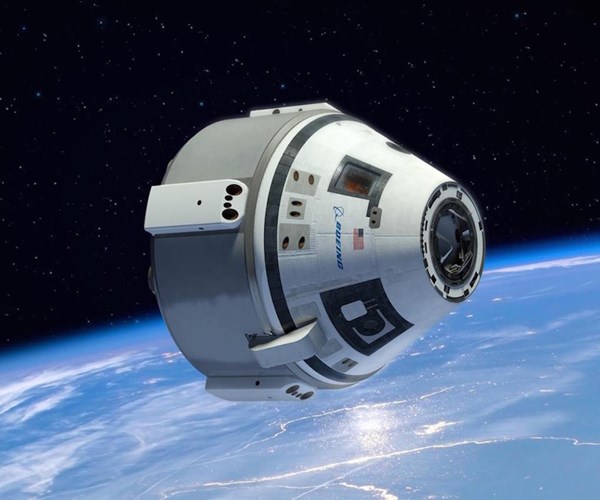Space: Where 3D Printing Innovates?
It’s called the “Final Frontier” but maybe space is actually a closer to a present-day trendsetter. What does that mean?

Well, there’s been a series of news items discussing how 3D printing is helping to launch various space programs. The most recent one comes from Solvay as the company is providing additive manufacturing lightweighting products to Oxford Performance Materials (OPM), which allow the development and manufacture of components for its low-Earth orbit aerospace project at Boeing.
In January, Oxford Performance Materials announced it has been selected by The Boeing Co. to manufacture 3D-printed structures for the Boeing CST-100 Starliner spacecraft, and OPM has begun shipping OXFAB production parts for installation (pictured below). The Starliner is designed to transport up to seven passengers, or a mix of crew and cargo, to low-Earth orbit destinations such as the International Space Station. It is under development in collaboration with NASA’s Commercial Crew Program. Oxford will manufacture more than 600 3D-printed parts for the Boeing CST-100 Starliner space taxis.
“From the project’s inception, we needed to provide not only significant weight and cost savings but also a drastic cut in lead-times,” says Bernard Plishtin, OPM’s chief business development officer. “This was made possible by Solvay’s reliable supply of high-performance materials for our specific additive manufacturing processes for 3D-printed aerospace structures.”
Excited to see what’s next on the horizon for 3D printing and space!
[1] copy.jpg;maxWidth=600)
Related Content
-
Large-Format “Cold” 3D Printing With Polypropylene and Polyethylene
Israeli startup Largix has developed a production solution that can 3D print PP and PE without melting them. Its first test? Custom tanks for chemical storage.
-
Make Every Shot Count: Mold Simulation Maximizes Functional Parts From Printed Tooling
If a printed tool only has a finite number of shots in it, why waste any of them on process development?
-
3D Printing of Injection Molds Flows in a New Direction
Hybrids of additive manufacturing and CNC machining can shorten tooling turnaround times.









.png;maxWidth=300;quality=90)





.png;maxWidth=970;quality=90)